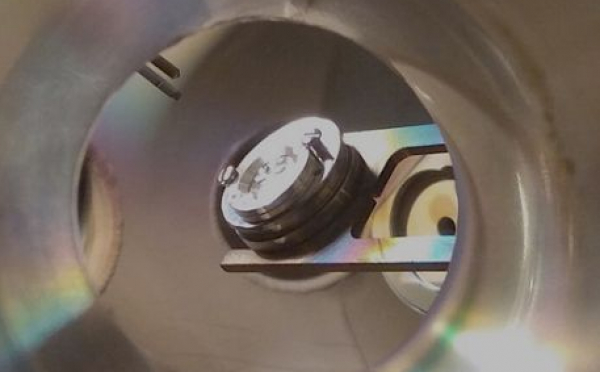In green technologies, photocatalytic materials that use sunlight to stimulate chemical reactions that are important for the environment, are fundamental. However, the physical processes underlying their functioning are not yet fully understood. Now a collaboration between the Nanosciences Institute (Cnr-Nano) and the Institute of Structure of Matter (Cnr-Ism) of the National Research Council of Italy, the University of Modena and Reggio Emilia, the University of Bologna and Elettra Sincrotrone Trieste clarifies the ultrafast energy transfer mechanisms occurring in hybrid photocatalyst materials. The results obtained will help improve the efficiency of new materials for photocatalysis when applied to energy generation and the environment. The study is published in the journal Nano Letters.
Researchers studied hybrid photocatalysts consisting of metal nanoparticles combined with semiconductor oxides. "In these materials the nanoparticles absorb light through collective oscillations of electrons, known as plasmon resonances, and transfer the absorbed energy to the oxide with a mechanism not fully understood, but fundamental for the good or bad efficiency of the catalyst," explains Paola Luches of Cnr-Nano, who coordinated the study. "We have now shown that metal nanoparticles transfer electrons to the oxide through an ultra-fast and very efficient process, which occurs within a very short time, less than 200 femtoseconds (1 femtosecond is equal to one millionth of a billionth of a second), from the moment in which the light is absorbed ".
Such precise measurements were made possible thanks to an extremely advanced instrument: the FERMI free electron laser of Elettra Sincrotrone Trieste. "FERMI is a unique light source worldwide, capable of emitting extremely short and intense pulses in the X-ray range that make it one of the brightest and most powerful probes to study dynamic processes", says the first author Stefano Pelli Cresi of Elettra Sincrotrone Trieste. "FERMI has made it possible to study for the first time the dynamics of energy transfer between nanoparticles and semiconductors thanks to a technique that is extremely sensitive to the chemistry of the system and with a very high temporal resolution", explains Daniele Catone of Cnr-Ism.
The results of the study will help develop materials with better photoreactivity applicable to environmental technologies, such as the splitting of water to produce hydrogen, the reduction of carbon dioxide in the atmosphere and the purification of water or disinfection of surfaces. This study, a collaboration between the laboratories of Modena, Rome and Trieste, required rapid adaptation to the restrictions imposed by the pandemic emergency. "Access to the FERMI laser in Trieste is extremely limited, given its uniqueness. The second measurement was scheduled for the first days of March 2020, but we were forced to cancel the trip a few hours before the experiment, which took place for the first time in smart mode, coordinating the measurements remotely, in real time and 24 hours a day. The success was possible thanks to the determination and skills of the FERMI staff who made it possible to implement a system of remote contact in record time already during the first Italian lockdown", concludes Luches.
For information:
- Maddalena Scandola, Press Office Cnr-Nano, ;
- Paola Luches, researcher Istituto Nanoscienze, ;
- Daniele Catone, researcher Cnr-Ism, ;
- Jacopo Stefano Pelli Cresi, Elettra Sincrotrone Trieste,
- Marco Marazzi, Press Office Elettra Sincrotrone Trieste,
#green_technologies #photocatalytic_materials #free_electron_laser #NanoLetters


 English (UK)
English (UK)  Italiano (Italia)
Italiano (Italia)